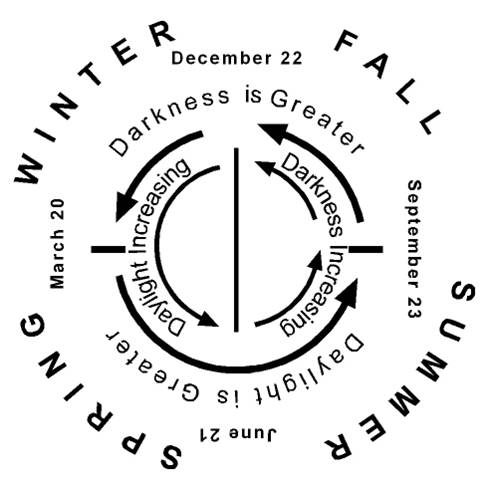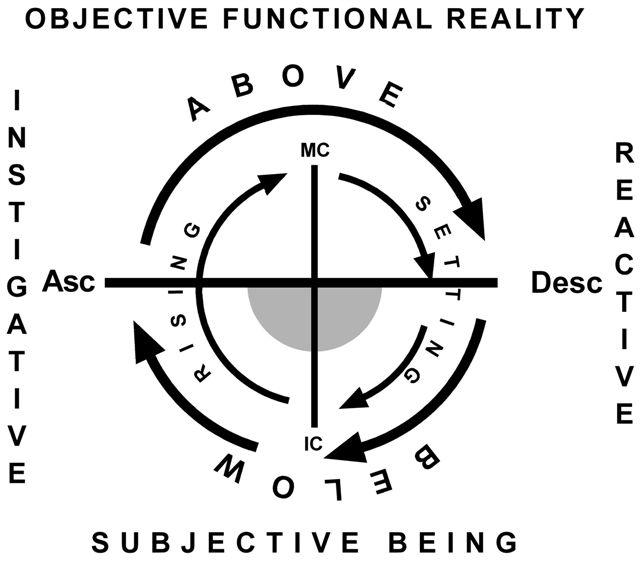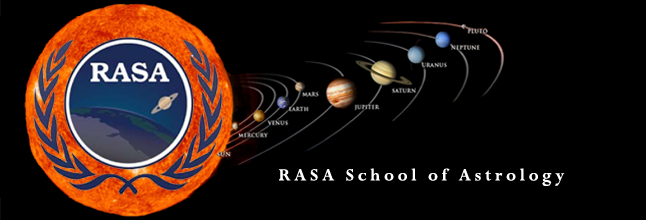The Signs and the Houses, By Robin Armstrong
There are differing views about the Signs of the Zodiac and the astrological Houses. Over the last forty years, due to primarily the influence of well established American astrologers much material has been printed equating the signs with the houses, as if they are the same thing. This is part of a modern take on astrology, like removing the traditional rulerships and assuming that since there are twelve signs, there must be twelve planets to rule them. These ideas have been readily picked up and published and passed on. The foundational logic of these ideas, however, still remains questionable. There are other approaches as well where the signs and the houses are treated differently. In this article focus will be directed to the nature of the signs and the nature of the houses.
If one takes the nature of astrology to be simply symbolical while using the modes, elements and rulerships as the basis of comprehension, then it seems common sense that the 12 signs of the zodiac should be the same as the corresponding House. That sign one and house one should be the same, is a numerological association which seems valid within the realms of symbolism. However, what happens if astrology is more than a symbol? What happens if it is partly based on the very nature of life that we live and have our being in? What happens if the horoscope is a map of the very forces and circumstances of nature around us at the time and place of birth? This is a second view of astrology where everything has relevance and where one can gain a very clear perspective on the circumstances around us at birth. This can lead to a very clear perspective on the nature of a person.
Like music, astrology has its symbolism and numerological associations. As in music a disproportional expression would probably also create a more vulgar approach. Everything has its place, its volume and its timing. There are millions of musicians but not many with perfect timing or perfect pitch.
Nature has been called God’s music. To some astrology allows us to hear the music of nature and apply its insights into the scheme of our own lives. In this way we can perhaps live up to a divine plan of sorts.
For me astrology is the written music of nature and there is much to learn. The foundations need to be anchored in nature around us and in the heavens around us, otherwise it wouldn’t be astrology…the study of the stars! (and planets, Sun and Moon).
In taking this approach, the basis of the Tropical Zodiac, like the seasons of the year, depends upon the fluctuating relationship between light and darkness across a year cycle. The same would be true for the houses. They are measurements of the changing relationship or light and darkness but across a day cycle.
The signs and houses become gauges of the life (light) force and astrology becomes more than simply a symbolical mandala. It becomes a measurement of life and its meaning. A DNA of the soul.
There are two basic assumptions in astrology: 1. that life has meaning, and 2. that we are part of it. Aside from this most of the remaining information can be deduced from scientific or logical deduction.
A problem: Often the sign of Gemini is correlated to the Third House and interpreted as almost the very same thing. In the cycles of nature, however, there is a big difference. Gemini refers to the greatest build up of light across a year cycle. It is the brightest month of the year. The Third House by contrast refers the beginnings of light amidst great darkness. It refers to a two hour period of the day right after midnight.
There is an obvious big difference between these two phenomena and their phases within a circle. If you don’t think that astrology relates to the seasons and the forces of light and darkness, then this conclusion means nothing! But if you do, it will require some further reflection.
Perhaps a more detailed description of the observable cycles of light and darkness around the year and across a day will be of some assistance. Astrology is a language and there are many, many ways to improve and increase our literacy. There are also many ways to use this language other than consultations. Some of the most astrologically literate people are not professional astrologers! They are just people who have studied it for a long time.
The original source of inspiration for this approach came in the early seventies from Dane Rudhyar in his books: Astrology of Personality, Astrological Signs – The Pulse of Life, and The Astrological Houses – A Spectrum of Individual Experience.

The Zodiac Signs, the cycle of the year, and orbit of the earth around the sun.
In any cycle there are two extremes. In the year, it is the longest day (June 21) and the longest night (December 21). From h ere we can begin to study the nature of the cycle. Half of the year daylight is increasing (December 21 to June 21), and half of the year darkness or the Night-force is increasing (June 21 to Dec 21). These are the two primal phases of the year.
As daylight increases, so does the temperature and the level of activity. Let us call this the Yang ascension. The more active we are, the more independent we feel. This increasing light factor represents in the zodiac a momentum (for the soul born then) to move towards freedom and independent activity.
As the darkness increases the temperature falls. Life gets colder and colder in stages. With cold, activity diminishes and life becomes more difficult. As the darkness increases people and animals tend to pull together to make it easier to survive and use each others heat. In the zodiac as the darkness increases the social or communal forces increase and with it the amount of responsibility that must be taken on. This increasing darkness factor represents, in the zodiac, a momentum (for the soul born then) to move towards increasing responsibility and towards sharing or needing others.
The next factor divides the zodiac in half from the Spring and Fall Equinoxes, the points when day and night are equal or balanced momentarily. This divides the year into half where there is more light than darkness (March 21 to Sept. 23), and half where there is more darkness than light (Sept. 23 to March 21). Spring and summer people, versus fall and winter people! Let us call the Spring-Summer people the I-Me people in the Zodiac and the Fall and Winter people the We-Us people in the Zodiac. Think about it. Is it True?
When we put these two cycles together we see the four seasons and the three Zodiac signs in each season in a very clarifying perspective.
Spring (Aries, Taurus and Gemini): The signs when daylight is increasing and is also greater than darkness. These are the most independent people in the Zodiac. They like to do their own thing and be free. Perhaps we could see it as the signs that emanate an attitude of doing one’s own thing.
Summer (Cancer, Leo and Virgo): Daylight is greater than darkness but the darkness is increasing. Here there is still a predominance of independence but the momentum is towards increasing responsibilities. These signs want to participate but to independent to follow others. They have to lead and be seen. (Each according to their own element and mode and planetary ruler!)
Fall (Libra, Scorpio, Sagittarius): There is more darkness than daylight now and the darkness is increasing. These are the social signs where relating and sharing responsibilities predominate. They get their meaning and purpose in life from relating to others. Why bother if nobody cares?
Winter (Capricorn, Aquarius and Pisces): Here there is still more darkness than daylight but the daylight is increasing. It is cold and wintry but the light is steadily increasing. These are people with a strong sense of community and responsibility. They will take on commitments because they can see long term benefits that will come to them. It will in time give them more freedom and independence.
This is a very brief guide to this important association of light and darkness as it affects the Zodiac signs. You could test it out by observing if these are significant factors that can be added to the elements and modes.

The Astrological Houses.
The houses measure the light and darkness around the day cycle and they also show the movement of the earth as it rotates on its axis every twenty-four hours. Every minute, there is a changing relationship to the sun and light.
In the houses, the two extremes are midnight (the greatest darkness) and noon (the greatest brightness). These also relate to the place of the Zodiac highest in the sky and the point of the Zodiac lowest on the other side of the earth. From the place we stand or are born, half of the sky is rising and half is setting. These are the two main factors.
From midnight the Sun ascends until it rises and reaches true noon the brightest point in its daily cycle. This rising half of the sky or day represents the instigative process by which we bring things from deep within, out into the world around us where they can be seen. This is an Instigative factor and reveals how we project ourselves.
From noon to midnight the Sun descends increasingly getting darker until the greatest darkness at midnight. This represents the setting or reactive half of our chart. After having projected for half of the day we begin to respond to the feedback and reactions of others. It represents how we respond to others and who we chose to relate to. This is a Reactive factor.
Looking at this cycle from the horizon (Ascendant-Descendant axis) half of the sky is above us and can be seen while the other half is below us and cannot be seen. This creates a second polarity of significance. The half of the sky above us relates to the objective side of our life where we can see and interact with others around us. The half of the sky below us, that we cannot see, relates to the forces within us that we also cannot see but know are there. This is our subjective half. It represents our inner depth and character.
When these two sets of polarities are put together we get four phases around the horoscope.
House 3, 2, and 1 represent the period from midnight to sunrise. This is an area of subjective projection. We have our inner motivations and these houses reveal how we start to built up and express our inner motives or lack thereof.’
Houses 12, 11 and 10 represent the period from sunrise to noon. This is a phase of objective projection. We start to see that we can affect others by what we project and we gains friends or enemies according to what we project. This shows our social group, peers and status. It reveals what we are doing to make an impact or accomplish something in our life.
House 9, 8 and 7 represent the period from noon to sunset. This is a phase of objective reaction. Here we begin to respond to the result of what we have done and put out. We begin to sense how others are responding to us and perceive us. We develop social values here.
Houses 6, 5, and 4. represent the period from sunset to midnight. This is a phase of subjective reactive. Here we start to respond personally or subjectively to the reactions of others. By the time we take something personally, it has already gone below our horizon. This responsiveness can cause discomfort and illness, or challenge one to make personal adjustment to their performance so that they could feel more secure.
Forgive this very sparce interpretation of these factors, but the point is that by making these distinctions and keeping the houses as different factors than the signs, we significantly increase our depth perception in astrology. These are factors that should be included.
So to conclude, the 3rd house is in the quadrant of subjective projection. It is where we begin intuitively to express out personal motivations, and sense of security. It shows how you express where you are coming from.
The third sign Gemini represents a strong independent attitude that encourages a do it your self approach to life. The concern is about freedom, laughter, and even about getting away with things. It can be seen more clearly by contrast. Geminis will usually go out of their way to avoid responsibilities or other people telling them what to do!
 RASA School of Astrology Learn The Language of the Stars!
RASA School of Astrology Learn The Language of the Stars!